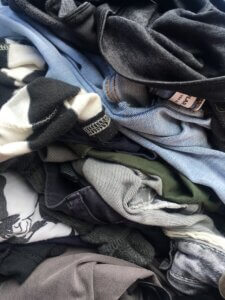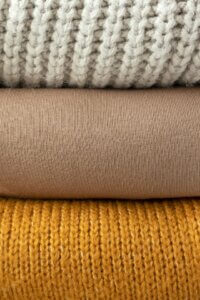Smoke Damage Cleaning Methods for Clothing and Fabrics
Smoke Damage Cleaning Methods for Clothing and Fabrics
Summary
After a fire, the lingering effects of smoke on clothing and fabrics can be as detrimental as the initial flames, leading to both superficial marks and deeply entrenched odours that affect the fabric’s longevity. Smoke’s impact on fabrics varies based on its source, leading to different residues. Not all fabrics react identically to smoke; for instance, wool can trap smoke particles while polyester resists them better. Effective fire damage cleaning involves isolation, vacuuming, odour neutralization, using specialized detergents, and multiple rinses. Delicate fabrics like silks, leathers, and heirlooms require specialized care or professional smoke damage cleaning services. Post-cleaning, it’s essential to maintain fabric quality through proper storage and regular inspection.
The devastation of fire is undeniable. While the most immediate concerns after a fire are flames, safety, and potential property damage, the lingering presence of smoke can be equally detrimental, especially on fabrics and clothing. This damage can range from superficial soot marks to deep-rooted odour infiltrations that affect both the fabric’s structural integrity and its overall longevity. The aftereffects of smoke are more than just an inconvenience; they are a subtle reminder of the fire, persisting long after the flames have been extinguished. As we navigate the post-fire landscape, understanding the methods of smoke damage cleaning becomes essential.
Understanding the Nature of Smoke Damage on Fabrics
Smoke’s impact on fabrics is multi-dimensional. On the surface, there are visible stains, but beneath, there are more intricate alterations:
Types of Residues: Smoke varies in its composition. There’s:
- Wet smoke from plastics and rubber leaves thick, smeary residues.
- Dry smoke from wood and paper that has a powdery, non-smeary residue.
- Protein-based smoke is virtually invisible but can discolour paints and varnishes.
- Fuel oil soot from furnace puff backs.
Fibre Sensitivity: Not every fabric reacts the same way to smoke. While synthetics might partially repel soot, natural fibres can absorb and retain the particles deeply. Wool, for instance, is porous and can trap smoke particles, whereas polyester, being synthetic, offers more resistance.
The Essential Guide to Cleaning Smoke-Damaged Clothing
Rescuing garments from smoke is a meticulous process involving numerous smoke damage cleaning steps:
Immediate Isolation: Begin by separating the smoke-affected clothing. This prevents soot and smoke particles from transferring to clean garments and reduces the risk of the smoke smell permeating uncontaminated fabrics.
Vacuuming: Before introducing any liquid, gently vacuum the garments using an upholstery attachment. This helps lift loose soot particles without embedding them further. Always vacuum in a top-down motion and ensure that the fabric remains taut to avoid deepening the damage.
Odour Neutralization: White vinegar is more than just a kitchen staple; it’s a natural odour combatant. Prepare a solution combining one-part vinegar with two parts water. Soak the affected garments in this mixture for a few hours before initiating the wash cycle.
Specialized Detergents: The market offers detergents tailored to combat smoke damage. These products contain agents designed to break down smoke molecules, ensuring a deeper cleanse and effective odour elimination.
Multiple Rinses: Sometimes, a single rinse won’t suffice. To ensure the complete removal of smoke residues, consider a double or even triple rinse cycle.
Addressing Smoke Damage Cleaning in Delicate and Specialty Fabrics
Delicate fabrics demand an extra layer of care when undergoing smoke damage cleaning:
Silks and Wools: These fabrics are inherently delicate. Use lukewarm water with a pH-neutral detergent and hand wash gently. Avoid wringing and instead, roll them in a clean towel to extract excess water. Air-drying flat ensures they retain their shape.
Leather and Suede: These materials are unique and sensitive to water. They require leather-specific cleaning agents or, in some cases, professional treatment to restore their natural sheen and feel.
Heirlooms and Antiques: Historic fabrics, lacework, and garments passed down through generations are priceless. Always consult a textile conservator or a smoke damage cleaning professional before attempting any DIY methods.
Professional Smoke Damage Cleaning: When to Seek Expert Help
Sometimes, the severity of damage demands a professional touch:
Extensive Damage: A closet full of affected garments might be overwhelming and beyond DIY smoke damage cleaning methods.
Unknown Residue: If you can’t discern the type of residue or if the smoke source was mixed, it’s better to consult experts who can identify and address the damage effectively.
Precious Items: High-value garments, designer wear, or pieces with sentimental value should be treated with the utmost care, often warranting professional expertise.
Preservation: Post-Cleaning Care
Restoration is just the first step; maintaining the rejuvenated fabric quality is equally pivotal:
Airing Out: Even post-cleaning, it’s beneficial to let garments air out in an open space. This ensures any trapped odours are released, leaving the fabric truly fresh.
Storage: Store cleaned garments in a cool, dry place. Instead of plastic, use breathable garment bags or cotton sheets. This prevents moisture and potential mould build-up.
Regular Inspection: Periodically check stored garments for any signs of recurring smoke damage or odours. Early detection makes re-treatment more effective.
The aftermath of a fire is undeniably challenging, both emotionally and physically. Clothing and fabrics often hold memories and preserving them is akin to preserving a piece of ourselves. With the right knowledge, tools, and determination, recovery from smoke damage is not just possible but probable. Effective smoke damage cleaning ensures a return to normalcy and a once again safe and healthy home.
FAQs
What is smoke damage and why is it harmful?
Answer: Smoke damage refers to the residual soot, discolouration, and odorous particles left behind after a fire. It’s harmful because, apart from the obvious aesthetic concerns, the residues can contain toxic elements and carcinogens that pose health risks. Additionally, the acidic nature of soot can deteriorate materials over time, affecting the lifespan and quality of items.
Can all fabrics and materials be cleaned after smoke damage?
Answer: Not all materials respond equally to cleaning after smoke damage. While many fabrics, especially those made from natural fibres, can be cleaned to a certain extent, there are some, like certain delicate silks or antique textiles, that may never fully return to their original state. It’s crucial to identify the material and choose the appropriate cleaning method.
Is it safe to clean smoke-damaged clothing at home?
Answer: While it’s possible to clean mild smoke damage at home using techniques like vacuuming and soaking in vinegar solutions, extreme smoke damage, especially from more extensive fires, should be treated with caution. Harmful toxins or residues might remain even after washing, and professional cleaning services might be necessary to ensure the complete removal of contaminants.
How do I get rid of the smoke smell from my belongings?
Answer: Getting rid of the smoke smell requires a multi-pronged approach. Start by airing out the items in a well-ventilated area. For fabrics, consider washing them with an odour-neutralizing solution, like a mix of water and white vinegar or specialized detergents designed for smoke damage. For non-washable items, activated charcoal or baking soda can help absorb odours when placed nearby in a contained space.
How long after a fire should I wait to start the smoke damage cleaning process?
Answer: It’s advisable to start the smoke damage cleaning process as soon as it’s safe to do so. The longer soot and smoke residues sit on surfaces, the harder they become to remove. Additionally, acidic soot residues can begin to cause corrosion or discolouration on surfaces almost immediately. However, always ensure the area is safe and consult professionals if needed.
Why Choose AllAces?
It is highly recommended to hire smoke damage cleaning professionals to handle all necessary cleaning as smoke residues can pose serious health risks. AllAces Cleaning & Restoration has more than 35 years of industry experience, safely and efficiently handling smoke damage cleaning and fire damage restoration across Brisbane, Sydney, Melbourne, and surrounds. Our IICRC-certified technicians are trained and experienced to handle any level of smoke damage cleaning to return your property and possessions to a pre-loss condition.



